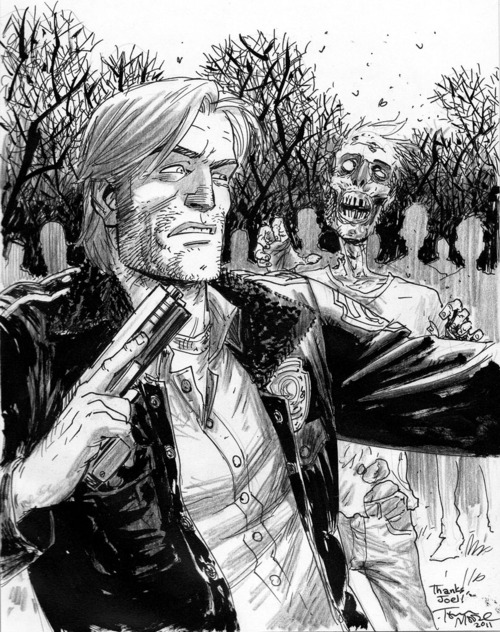If you haven’t heard of The Walking Dead, then you’ve probably been living under a rock for the past four years. The Walking Dead franchise has expanded into several mediums including a TV series and an award-winning video game, but it began as a comic book. The first compendium came out in May of 2009 and consists of single issues one to 48.
The narrative is fairly close to the hugely popular television series, which just began its fourth season. The series begins with Rick Grimes — who wakes up from a coma to find himself in the zombie apocalypse — and follows him as he finds his family and makes his way across the country; he finally finds refuge with an old veterinarian named Hershel at a relatively secluded and self-sustaining farm.
Because the volume is so expansive, I won’t get into the nitty gritty of the plot, especially since The Walking Dead is now such a far reaching franchise and I’d be likely to spoil some aspect of the story for someone. The series is written by veteran comic author, Robert Kirkman, who has worked on other major titles such as Invincible and Ultimate X-Men. On paper, Kirkman hosts an impressive resume. He is a best-seller for multiple series, and he’s one of the five partners who own the popular publisher Image Comics.
I have to admit that the one problem I have with this graphic novel is the writing — to be more specific, the dialogue. Characters often narrate their own actions, which slows down the pace of the book, making it drag on. Many of the characters recount events that have just occurred to each other, almost immediately after they happen.
Even simple actions — like emptying out the bed of a truck before getting into it — seem to require vocal acknowledgment, usually in a dialogue between two or more characters. There is no reason for this; most readers are capable of making the connection through either logic or visual cues present in the art.
The art itself is actually divided between two illustrators: Tony Moore and Charlie Adlard. Moore did issues one through six, with Adlard taking over the rest. To be honest, the more dramatic and ink-heavy art of Adlard is a far better fit for this dark graphic novel, so the change was well founded.
Adlard relies on dramatic light sourcing, something common among artists that specialize in black and white. This style of art provides an overall harsh aesthetic that helps to emphasize the danger and emotional turmoil present in Kirkman’s narrative. I found the art to be very impressive, and significantly less gory than the television series.
Because of the problems with the dialogue, and how persistent these are from issue to issue without improvement, I probably won’t be continuing this series, but I encourage fans of the show, or of zombie and horror genres in general, to check it out.

